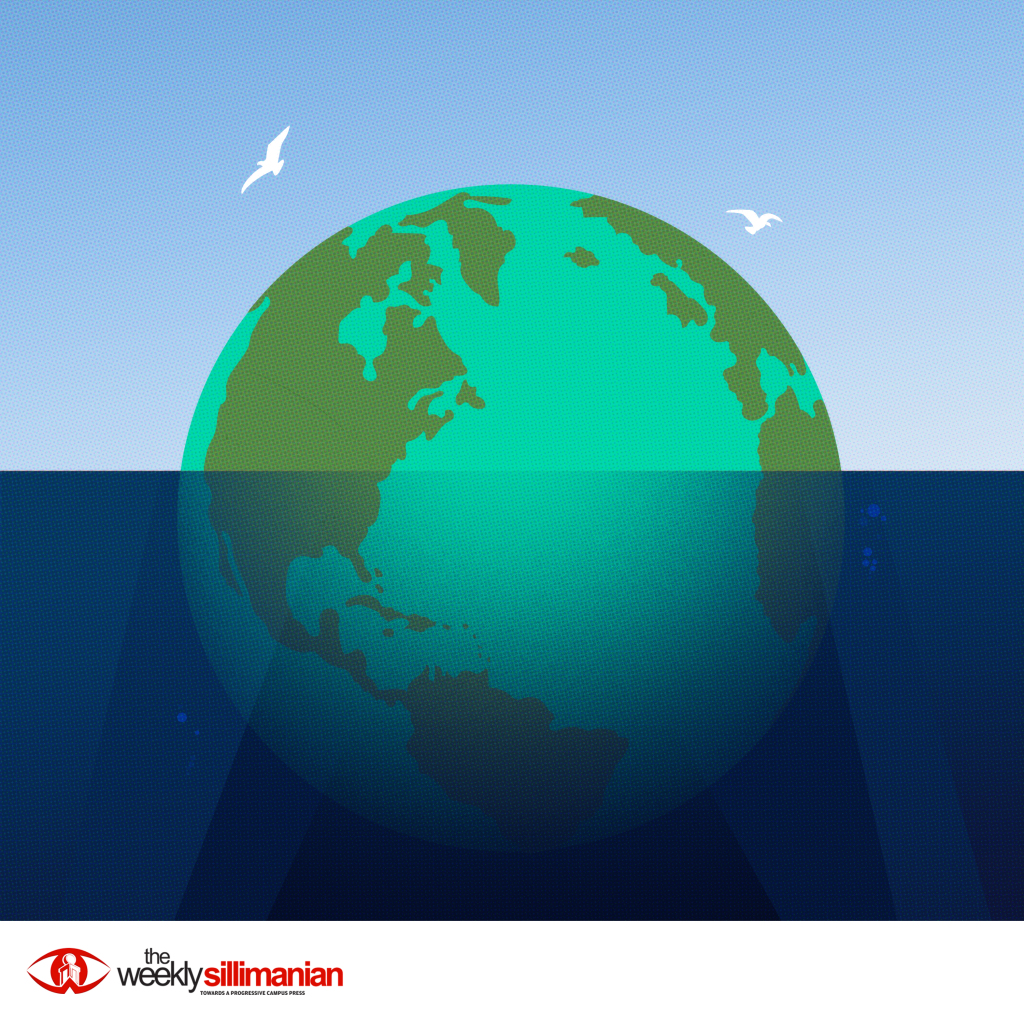By Diamay Klem D. Balacuit | March 10, 2021

Nature is now at its breaking point.
Following the breaking of an iceberg in Antarctica—with a size larger than New York—the world is now on the brink of submerging. Places below sea-level are in grave danger of plunging into the water as sea levels continue to rise. Countries vulnerable to the effects of climate change are now facing the said threats. What once was considered the problem for tomorrow is faced by the people of today.
Over the past years, scientists have been observing the conditions of the ice sheets in Antarctica. Expansive cracks have been recorded since. The scientific community is panicking at this as it is still unclear as to what this phenomenon means for the whole world.
Climatic Implications
The ice sheets in the Antarctic and Arctic regions are held together by a balancing act. They lose mass when the ice melts or breaks off into the ocean. However, under ideal circumstances, the lost mass is restored through snowfall building up on the surface. Climate change causes imbalance.
With climate change, the balanced cycle of breaking and forming of ice sheets in Antarctica has been disturbed. The retreat of glaciers in Arctic and Antarctic regions has contributed to almost 50% of the rising sea levels. In turn, this brought damage felt throughout the world.
A study has shown that, over the past 30 years, ice melt has steadily increased. It also found that the rate of ice loss has increased by 65% between 1994 and 2017, affecting Antarctica and Greenland directly, and further leading to the formation of meltwater lakes. According to a discovery of Durham University, meltwater lakes are associated with rising global temperatures. Scientists from the UK have also found that more than 65,000 pools of melting ice are present on the edge of the East Antarctic Ice Sheet. This discovery has led to show that the region, as cold as it is, is now vulnerable to global warming.
Impact on the Philippines
Low-lying areas in the Philippines are on the verge of sinking. A study by Climate Central, which was reported by the Philippine Star, has stated that the sea level has risen by about eight inches since 1880 and the rate of the rise is accelerating every minute. It also projected that a rise of 4 to 19 inches would be observed by 2050 in different parts of the country. Parts of Manila, Bulacan, Valenzuela, and Pasay City in Luzon, Roxas and Iloilo Cities in the Visayas, and Cotabato, Surigao, and Butuan in Mindanao are projected to be below sea level in 30 years.
With the projected situation of these places, at least 8.6 million Filipinos will be directly affected by these rising sea levels. These people will be displaced from their homes and will need extensive government assistance to start new lives.
Course of Action
While it is right to be hopeful that the situation will change, it can’t be denied that climate refugees—victims of this global phenomenon—have started to migrate from their home countries which are soon to sink below the waves. Successful countries have solutions to this problem, of course. Artificial islands are being built in the Middle East and the Arabian Peninsula to face this problem.
The same could not be said, however, with poorer countries. To move a community of 100 people to the higher ground requires at least half a million dollars. Such was the case of Fiji in 2014. Of course, moving more people requires much more money, and there are only so many highlands in the world.
It becomes evident that this issue is not just an environmental one. Without the combined humanitarian, economic, and environmental of many nations, more islands would sink and more people would be displaced. In the far future, perhaps nearer than most think, some nations, peoples, and cultures would cease to exist. The call for climate justice would help with this; but, as long as this crisis is not considered a socioeconomic issue, it won’t be solved. As long as people who have not traveled far from their hometowns, blaming Bill Gates or some other big-name for the “fake snow,” do not care about those who have already lost their homes, people all over the world would drown.
Sources:
Harvey, C. (2021, Mar. 4). Huge Atmospheric Rivers Could Quicken Antarctic Ice Melt. Scientific American. Retrieved from: https://www.scientificamerican.com/article/huge-atmospheric-rivers-could-quicken-antarctic-ice-melt/
Hirsh, S. (2021, Jan. 29). Global ice loss is catching up to worst-case scenario predictions. World Economic Forum. Retrieved from: https://www.weforum.org/agenda/2021/01/global-ice-loss-climate-change-environment-melting-global-warming/
Kettley, S. (2019, Sep. 27). Antarctica: ‘Concerning’ discovery of melting ice sheet raises alarm – ‘We were surprised’. Express Newspapers. Retrieved from: https://www.express.co.uk/news/science/1183462/Antartica-ice-sheet-melting-climate-change-news-antarctic-meltwater-lakes-global-warming
The Strait Times Editorial. (2019, Dec. 5). The Philippines will be underwater in 30 years: Inquirer. The Strait Times Asia. Retrieved from: https://www.straitstimes.com/asia/the-philippines-will-be-underwater-in-30-years-inquirer


